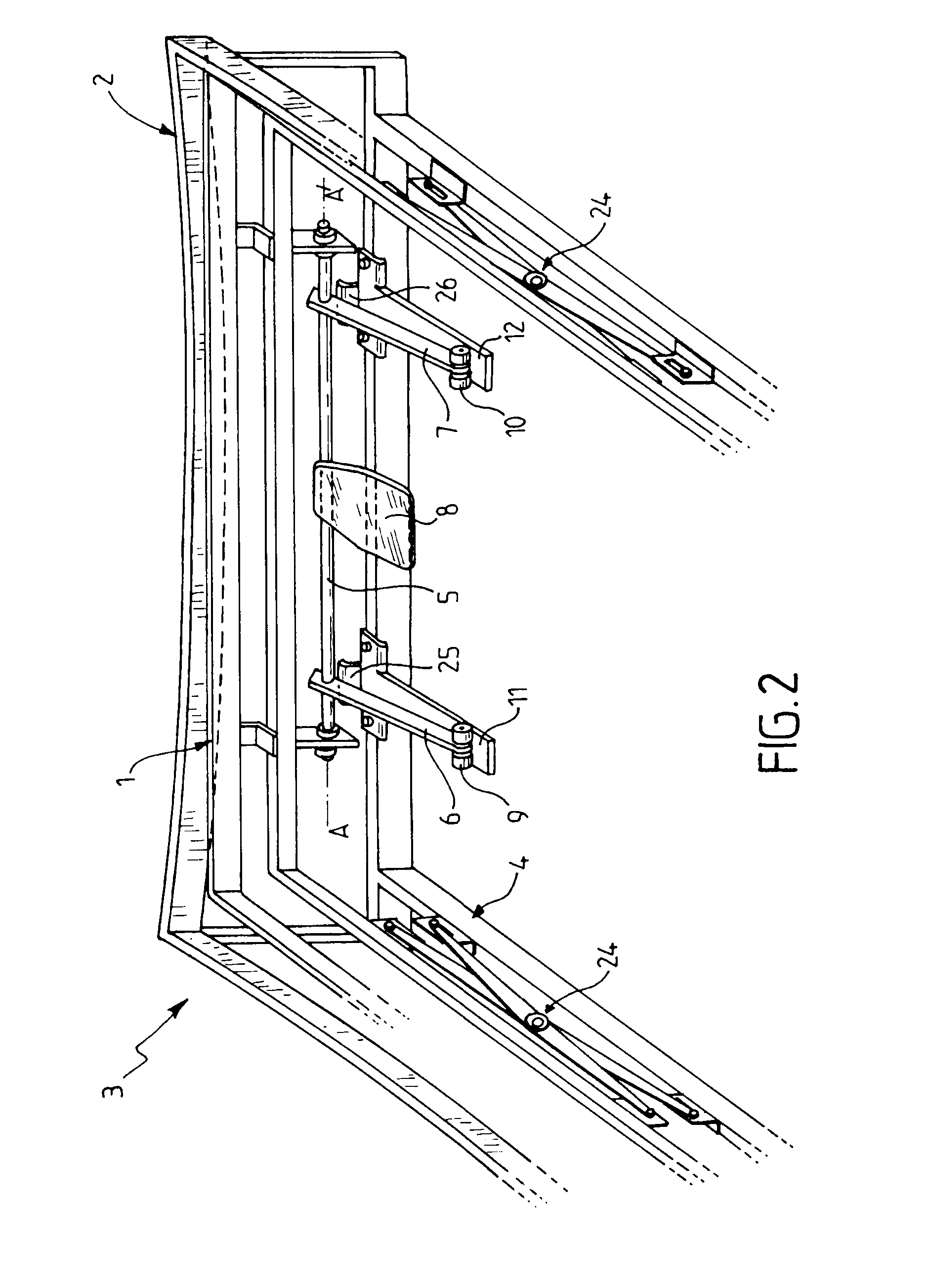Device for gravity-bending glass on several support moulds with controlled transition between moulds
a technology of gravity bending and support moulds, which is applied in the direction of glass blowing apparatus, glass making apparatus, glass shaping apparatus, etc., can solve the problems of lateral displacement of sheets, lower reproducibility of final glazing, or even marking of glazing, etc., and achieve the effect of reducing the risk of glass being marked by the support and reproducibility
- Summary
- Abstract
- Description
- Claims
- Application Information
AI Technical Summary
Benefits of technology
Problems solved by technology
Method used
Image
Examples
Embodiment Construction
[0049]FIG. 1 shows a bending assembly 3 comprising a first support 1 and a second support 2. This assembly is shown in the state corresponding to the first bending phase, that is to say the first support is in an upper position for carrying the glass sheet placed horizontally thereon. The second support 2 is in a lower, standby, position. This second support is fastened to the framework supporting the assembly and does not move throughout the bending operation. This figure shows part of the system for initiating the replacement of the first support with the second support in the upper position for supporting the glass. This part of the system is fixedly linked to the first support and comprises a horizontal bar 5 (a different bar from that used to control the rate of lowering of the first support) which can rotate about its axis AA′, a pad 8 fastened to this bar 5 being able to receive a thrust via the outside of the assembly (and therefore via the concealed side of the pad shown in...
PUM
| Property | Measurement | Unit |
|---|---|---|
| bending temperature | aaaaa | aaaaa |
| temperatures | aaaaa | aaaaa |
| gravity bending | aaaaa | aaaaa |
Abstract
Description
Claims
Application Information
 Login to View More
Login to View More - R&D
- Intellectual Property
- Life Sciences
- Materials
- Tech Scout
- Unparalleled Data Quality
- Higher Quality Content
- 60% Fewer Hallucinations
Browse by: Latest US Patents, China's latest patents, Technical Efficacy Thesaurus, Application Domain, Technology Topic, Popular Technical Reports.
© 2025 PatSnap. All rights reserved.Legal|Privacy policy|Modern Slavery Act Transparency Statement|Sitemap|About US| Contact US: help@patsnap.com



